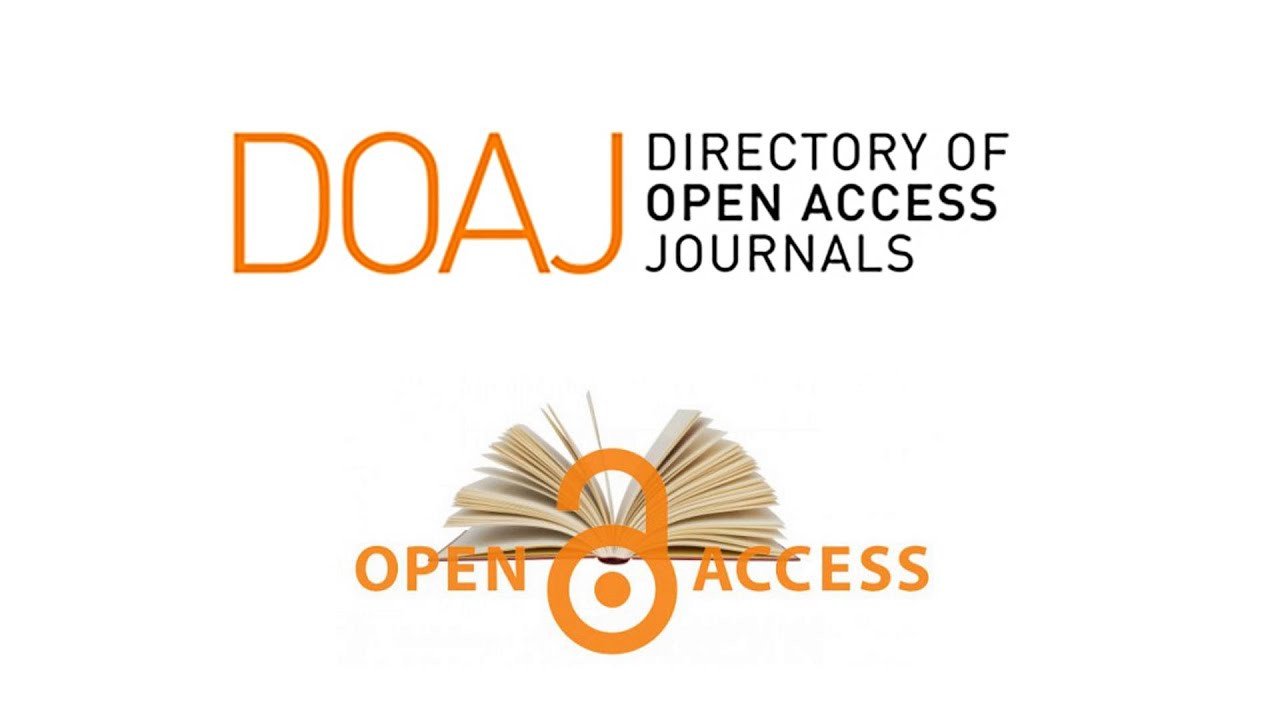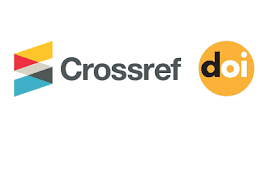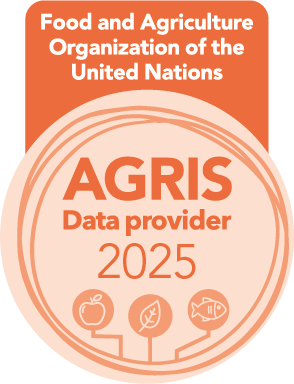Evaluation of the effects of garlic powder and oil on growth performance and physiological parameters of common carp (Cyprinus carpio L.)
Keywords:
Fish diet, Garlic Powder, Garlic Oil, Hematological parameters.Abstract
This study evaluated the effects of dietary garlic powder (1%), garlic oil (1%), and their combination (0.5%) each on the growth performance and some biochemical parameters of common carp (Cyprinus carpio L.) over a 75 day period. The results showed that the treatments with added garlic powder and garlic oil improved growth performance compared to the control group (C). Notably, the synergistic blend treatment removes (T3) demonstrated significant improvements in final weight (30.4 g), weight gain (18.3 g), relative growth rate (151.2%), specific growth rate (1.65%/day) and feed conversion ratio (1.81) with statistically significant differences (P<0.05) compared to other treatments. Digestibility was also significantly enhanced in all treatments containing garlic powder, garlic oil and their combination with the highest total digestibility recorded in treatment T3 (84.8%), which differed significantly (P<0.05) from the other treatments. Blood analyses indicated a gradual increase in values with the use of the garlic powder and oil mixture, with the highest levels observed in fish fed the T3 diet. The total blood protein concentration reached 2.08 mg/dl. An increase in albumin concentration was noted in all fish-fed diets supplemented with garlic powder and oil compared to the control, reaching the highest value in T3 (0.96 mg/dl). Regarding globulin concentration, a significant increase (P<0.05) was observed in treatment T3 compared to the other treatments, with a value of 1.12 mg/dl. Liver enzyme analysis (AST, ALT, and ALP) in serum showed reduced enzyme levels indicative of improved liver function in treatments T1, T2, and T3 compared to the control group, with the lowest values recorded in T3: 82.7 IU/l (AST), 7.79 IU/l (ALT), and 45.2 IU/l (ALP), The study concluded supplementing diets with garlic powder or oil, particularly their synergistic blend for Cyprinus carpio L. was effective in improving growth performance, enhancing general health status and increasing feed efficiency.
Metrics
References
Abarike, E.D.; Jian, J.C.; Tang, J.F.; Cai, J.; Yu, H.; Chen, L.H. and Jun, L. (2018). Influence of traditional Chinese medicine and Bacillus species (TCMBS) on growth, immune response and disease resistance in Nile tilapia, Oreochromis niloticus. Aquaculture Research, 49, 2366 – 2375.
Abd-El-Hamid, A.M.; Khalil, F.F.; EL-Barbery, M.I.; Zaki, V.H. and Husien. H.S. (2002). Feeding Nile Tilapia on Biogen to Detoxify Aflatoxin Diet. In: Annual Scientific Conference of Animal and Fish Production 1. Proceedings Mansoura University. Pp: 207 – 230.
Arsene, M.M.; Davares, A.K.; Andreevna, S.L.; Vladimirovich, E.A.; Carime, B.Z.; Marouf, R. and Khelifi, I. (2021). The use of probiotics in animal feeding for safe production and as potential alternatives to antibiotics. Veterinary World, 14 (2): 319.
Blaxhall, P.C. and Daisly, K.W. (1973). Routine hematological methods for use with fish blood. J. Fish Biol., 5: 771- 781.
El-Basuini, M. F.; Shaban, M.M.E.A.; El-Hais, A.M.; Soliman, A.A.; Abu-Elala, N.M.; Teiba, I.I.; Alhoshy, M.; Sallam, G.R.; Shadrack, R.S.; Mzengereza, K. and Shehata, A.I. (2024). Exploring the Dual Benefits of Fermented and Non-Fermented Garlic Powder on Growth, Antioxidative Capacity, Immune Responses, and Histology in Gray Mullet (Liza ramada). Fishes, 9, 401. https://doi.org/10.3390/fishes9100401.
El-gendy, M.Y.; Ali. S.E.; Abdelsalam, M.; Abd El-Aziz, T.H.; Abo-Aziza, F.; Osman, H.A.; Authman, M.M.N. and Abbas, W.T. (2023). Onion (Allium cepa) improves Nile tilapia (Oreochromis niloticus) resistance to saprolegniasis (Saprolegnia parasitica) and reduces immunosuppressive effects of cadmium. Aquacult Int., 31(3):1457 – 1481.
EL-Haroun, E.R. A-S.; Goda, A.M. and Chowdhury, M.A. (2006). Effect of dietary probiotic Biogen supplementation as a growth promoter on growth performance and feed utilization of Nile tilapia Oreochromis niloticus (L.). Aquac. Res.37 (14) : 1473 – 1480.
Eroldo˘gan, O.T.; Glencross, B.; Novoveska, L.; Gaudêncio, S.P.; Rinkevich, B.; Varese, G.C.; de Fátima Carvalho, M.; Tasdemir, D.; Safarik, I. and Nielsen, S.L. (2023). From the sea to aquafeed: A perspective overview. Rev. Aquac., 15, 1028 – 1057.
Farahi, A.; Kasiri, M.; Sudagar, M.; Iraei, M.S. and Shahkolaei, M.D. (2010). Effect of garlic (Allium sativum) on growth factors, some hematological parameters and body compositions in rainbow trout (Oncorhynchus mykiss). Aquaculture, Aquarium, Conservation and Legislation International Journal of the Bioflux Society, 3 (4): 317 – 323.
Fierro-Coronado, J.A.; Angulo, C.; Rubio-Castro, A.; LunaGonzález, A.; Cáceres-Martínez, C.J.; Ruiz-Verdugo, C.A. and Diarte-Plata, G. (2018). Dietary fulvic acid effects on survival and expression of immune-related genes in Litopenaeus vannamei challenged with Vibrio parahaemolyticus. Aquaculture Research, 49 (9): 3218 – 3227.
Gabor, E.F.; Sara, A.; Bentea, M.; Creta, C. and Baciu, A. (2012). The effect of phytoadditive combination and growth performances and meat quality in rainbow trout Oncorhychus mykiss. Anim. Sci. Biotechnol., 45 (2): 43 – 47.
Güroy, D.; Emre, N.; Yalım, F.B.; Karadal, O.; Kaya, D. and Arifoğlu, N. (2024). Interaction of dietary garlic (Allium sativum), onion (Allium cepa), and probiotic on the growth performance and health status of juvenile rainbow trout (Oncorhynchus mykiss). Aquaculture International, (32): 4515 – 4528. https://doi.org/10.1007/s10499-024-01388-5.
Harikrishnan, R.; Kim, M.C.; Kim, J.S.; Balasundaram, C. and Heo, M.S. (2011). Protective effect of herbal and probiotics enriched diet on haematological and immunity status of Oplegnathus fasciatus (Temminck & Schlegel) against Edwardsiella tarda. Fish and Shellfish Immunology, 30 (3): 886 – 893.
Herwing, N. (1979). Handbook of drugs and chemicals used in the treatment of fish diseases: A manual of fish pharmacology and materia medica. Thomas, Springfield: 272 p.
Hien, V.D.; Seyed H.H.; Wanaporn, T. and Pimporn, K. (2017). The effects of dietary kefir and low molecular weight sodium alginate on serum immune parameters, resistance against Streptococcus agalactiae and growth performance in Nile tilapia (Oreochromis niloticus). Fish and Shellfish Immunol., 62: 139 – 146.
Hoseini, M.S.; Gharavi, B.; Mirghaed, A.T.; Hoseinifar, S.H. and Van Doan, H. (2021). Effects of dietary phytol supplementation on growth performance, immunological parameters, antioxidant and stress responses to ammonia exposure in common carp, Cyprinus carpio (Linnaeus, 1758). Aquaculture, 545: 737151.
Hossain, M.S.; Small, B.C.; Kumar, V. and Hardy, R. (2024). Utilization of functional feed additives to produce cost-effective, ecofriendly aquafeeds high in plant-based ingredients. Rev. Aquac., 16, 121–153.
Huang, X.; Zhao, Z.; Yang, Y.; Song, Q.; Ding, J.; Han, B. and Zhao, C. (2024). Dietary allicin improves behavior, physiology, growth, and disease resistance in the sea cucumber Apostichopus japonicus. Aquaculture, 593, 741321.
Ispir, U.; Ozcan, M. and Seker, E. (2022). Immunomodulation function of Tunceli garlic (Allium tuncelianum) oil in Rainbow Trout (Oncorhynchus mykiss). Int J Agric Environ Food Sci., 6 (1): 7 – 12. Doi https://doi.org/10.31015/jaefs.2022.1.2.
Jobling, M. (1993). Bioenergetics feed intake and energy partitioning. In: Rankin, J.C. and Jensen, F.B. (Eds.), Fish physiology. London: Chapman and Hall, pp: 1 – 44.
Kaur, H. and Ansal, M.D. (2020). Efficacy of garlic powder as a growth promoting feed additive for higher growth and improved flesh quality in an Indian Major Carp, Labeo rohita (Ham.) fingerlings, Journal of Entomology and Zoology Studies, 8 (2): 25 – 29.
Lee, D.; Lim, S.; Ra, C. and Kim, J. (2012). Effects of dietary garlic extracts on whole body amino acid and fatty acid composition, muscle free amino acid profles and blood plasma changes in juvenile sterlet sturgeon, Acipenser ruthenus. Asian Australas J. Anim. Sci., (25): 1419 – 1429.
Luo, Z.; Tan, X.Y.; Liu, X. J. and Wen, H. (2011). Effect of dietary betaine levels on growth performance and hepatic intermediary metabolism of GIFT strain of Nile tilapia Oreochromis niloticus reared in freshwater. Aquaculture Nutrition, 17, 361 – 367.
Metwally, M.A.A. (2009). Effects of garlic Allium sativum on some antioxidant activities in Tilapia Nilotica Oreochromis niloticus. World Journal of Fish and Marine Sciences.1 (1): 56 – 64.
Mohammad, M.A. (2020). Influence of different levels of garlic Allium sativum powder additions on growth promoter and biochemical composition of common carp Cyprinus carpio L. Plant Archives, 20 (2): 7321 – 7326.
Mohammad, M.A. (2023). Effect of adding garlic Allium sativum powder in diet on effect on hematology, biochemical and histopathology criteria of common carp Cyprinus carpio L. Iraqi Journal of Agricultural Sciences, 54 (4): 1040 – 1049.
Motlagh, H.A.; Safari, O. and Pourmozaffar, S. (2021). Effect of garlic extract supplementation on growth performance, nonspecific immunity, and antibacterial activity of skin mucus in goldfish, Carassius auratus. Int. J. Aquat. Biol., 9 (6): 350 – 359. DOI: https://doi.org/10.22034/ijab.v9i6.1306.
Nie, P.; He, Y.; Liu, F. and Zhang, H. (2021). Livestock and Aquaculture Information Sensing Technology. In Agricultural Internet of Things. Springer, pp. 185-218.
Nwakpa, J.N. and Ikwor, T. N. (2024). Effect of Dietary Inclusion of Garlic as Additive on Growth Performance and hematological Parameters of Clarias gariepinus (Burchell 1822) Fingerlings. Asian Sci. Bull., 2 (4): 392 – 400. https://doi.org/10.3923/asb.2024.392.400.
ÖZ, M. and Dikel, S. (2022). Effect of garlic (Allium sativum) - supplemented diet on growth performance, body composition and fatty acid profile of rainbow trout (Oncorhynchus mykiss). Cellular and Molecular Biology., 68 (1): 217 – 225. DOI: http://dx.doi.org/10.14715/cmb/2022.68.1.26.
Öz, M.; Inanan, B.E.; Üstüner, E.; Karagoz, B. and Dikel, S. (2024). Effects of dietary garlic (Allium sativum) oil on growth performance, haemato-biochemical and histopathology of cypermethrin-intoxicated Nile tilapia (Oreochromis niloticus). Vet Med Sci.,10: e1449. https://doi.org/10.1002/vms3.1449.
Putnik, P.; Gabric, D.; Roohinejad, S.; Barba, F. J.; Granato, D.; Mallikarjunan, K. and Bursać Kovačević, D. (2019). An overview of organosulfur compounds from Allium spp.: From processing and preservation to evaluation of their bioavailability, antimicrobial, and anti-inflammatory properties. Food Chemistry, 276, 680 – 691. https:// doi.org/10.1016/j.foodchem.2018.10.068.
Rodge, S.G.; Thakare, V.G. and. Joshi, P.S. (2018). Study of dietary garlic induced effects on hematology and biochemistry of Clarias batrachus (Linnaeus, 1758). Bioscience Discovery, 9 (3): 328 – 331.
Saleh, N.E.; Michae, F.R. and Toutou, M.M. (2015). Evaluation of garlic and onion powder as phyto-additives in the diet of sea bass (Dicentrarcus labrax). Egyptian Journal of Aquatic Research, 41, 211 – 217.
Sevier, H.; Raae, A.J. and Lied, E. (2000). Growth and protein turnover in Atlantic salmon (Salmo salar): the effect of dietary protein level and protein size. Aquaculture, (185): 10 – 20.
Shalaby, A.; Khattab, Y. and Abdel-Rahman, A. (2006). Effects of garlic, Allium sativum and chloramphenicol on growth performance, physiological parameters and survival of Nile Tilapia, Oreochromis niloticus. J. Venom Anim Toxins Incl., Trop Dis, (12): 172 – 201.
Shehata, A.I.; Shahin, S.A.; Elmaghraby, A.M.; Alhoshy, M.; Toutou, M.M.; Soliman, A.A.; Amer, A.A.; Habib, Y.J.; Gewaily, M.S. and Teiba, I.I. (2024). Stevioside mitigates lead toxicity in thinlip mullet juveniles: Impacts on growth, metabolism, and immune function. Aquatic Toxicol., 271, 106910.
Silva, F. (2022). Applicability of Fish Products Innovation, and Importance of Fish Valorisation with Low or Absent Commercial Value. Journal of Aquaculture Engineering and Fisheries Research, 8 (5): 35 – 36.
Tacon, A.G.J (1990). Standard methods for the nutrition and feeding of farmed fish and shrimp. In: Nutritive Sources and Composition. (2). Argent Laboratories Press, Redmond, W.A. 129.
Talbot, C. (1985). Laboratory methods in fish feeding and nutritional studies. In: Tytler, P. and Calow, P. (Eds.). Fish energetics: New perspectives. Croom Helm, London & Sydney: pp. 125 – 154.
Umaru, J.; Sadauki, A.M. and Nababa, A.S. (2022). Influence of dietary supplementation of garlic (Allium sativum) on some performance indices of Oreochromis niloticus fingerlings raised in plastic tanks. NSAP. 47 th Annuall Conference (JOS 2022). 1749 – 1753.
Valenzuela-Gutiérrez, R.; Lago-Lestón, A.; Vargas-Albores, F.; Cicala, F. and Martínez-Porchas, M. (2021). Exploring the garlic (Allium sativum) properties for fish aquaculture. Fish Physiol. Biochem., 47, 1179 – 1198.
Wiegertjes, G.; Stet, R.; Parmentier, H. and Muiswinkel, W. (1996). Immunogenetics of disease resistance in fish: a comparative approach. Dev Comp Immunol, (20): 365 – 381.
Wolf, K. and Darlington, R.W. (1971). Channel catfish virus: a new herpesvirus of ictalurid fish. Journal of Virology, 8 (4): 525 – 533.
Xu, A.; Shang-Guan, J.; Li, Z.; Gao, Z.; Huang, Y. and Chen, O. (2019). Effects of garlic powder on feeding attraction activity, growth and digestive enzyme activities of Japanese seabass, Lateolabrax japonicas, Aquaculture Nutrition, 1 – 10. DOI: 10.1111/anu.13001.
Yu, Y.Y.; Ding, L.G.; Huang, Z.Y.; Xu, H.Y. and Xu, Z. (2021). Commensal bacteria‐immunity crosstalk shapes mucosal homeostasis in teleost fish. Reviews in Aquaculture, 13 (4):2322–2343.
Downloads
Published
How to Cite
Issue
Section
License
Copyright (c) 2025 Iraqi Journal of Aquaculture

This work is licensed under a Creative Commons Attribution 4.0 International License.






